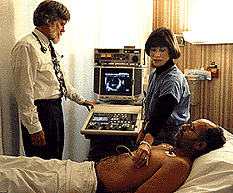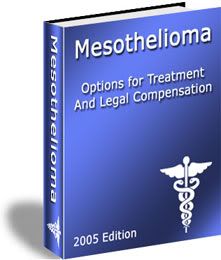Long-term outcome after pulmonary retransplantation.
Lung transplantation (LTx) has become an established therapeutic modality for a variety of end-stage pulmonary diseases. However, since most technical obstacles during transplantation and common complications in the early phase after transplantation have been properly addressed, the remaining major challenge is the prevention and treatment of bronchiolitis obliterans syndrome (BOS). In the literature the overall incidence of BOS within the first 5 years after primary LTx is approximately 50%. In addition, data suggest a lower chance for 10-year survival after LTx in patients with BOS. Currently, BOS is the cause of death in 17% of patients after LTx. This is, beside infection, the second leading cause of death and the number is growing with the increasing number of LTx procedures worldwide. BOS is a multifactorial disease and, apparently, the prevention of BOS by any single means is impossible. Although promising approaches to the prevention of BOS have been reported, strategies that have used new immunosuppressants have not provided satisfactory results.
Various treatment protocols for BOS were also suggested. However, the delay of further deterioration of lung function in BOS patients was called successful and many studies did not address the possible role of acute rejection or infection episodes after LTx in the context of BOS development. Therefore, some improvements seen in the course of BOS may be due to successful treatment of acute rejection or infection.
End-stage BOS eventually leads to lung failure. Therefore, it is our policy to offer pulmonary retransplantation (re-LTx) to patients with BOS in whom other strategies in the treatment of BOS have failed and in whom no organs other than the lungs are impaired. This strategy has been criticized as a waste of scarce donor organs in the past, since re-LTx was identified as a potential risk factor for survival after LTx. Beside BOS, re-LTx has also been performed for acute graft failure and bronchial healing complications in the early postoperative period after LTx. In outcome analyses, re-LTx was not stratified regarding these three indications. We analyzed the outcome in these three subgroups of re-LTx indications and compared the findings with those of primary LTx candidates at the Hannover Thoracic Transplant Program. In a subanalysis, the outcome after primary LTx as well as after LTx in patients with pre-LTx mechanical ventilatory support was compared.
Discussion
We have compared the outcome after re-LTx with that after primary LTx at our program and report the data as a single-center experience. All LTx procedures included to this study were performed over a period of more than 15 years. Certainly, early experiences led to different decisions in the later patients. Re-LTx for airway complications were rare in the last 5 years of this study, as were retransplants for acute graft failure. This is in part due to the growing experience from previous patients and due to a “quantum leap” in the quality of lung preservation. In contrast, re-LTx for chronic graft failure is a current topic, especially with regard to the growing number of recipients in whom severe BOS develops, despite all other efforts at prevention and treatment.
However, some trends were noticed in our study: First, airway complications seem to be more common in elderly men with emphysema. Second, re-LTx for acute graft failure in our cohort was most common in patients with fibrosis and idiopathic pulmonary hypertension, probably indicating a possible role of high pulmonary pressures during the reperfusion period or involvement of immunologic mechanisms on the development of acute lung graft failure. Third, indications for re-LTx in the chronic graft failure cohort were limited to younger patients with an otherwise promising prognosis, such as cystic fibrosis as the indication for primary LTx, with a gender distribution of two-thirds female and one-third males. In this group, long-term survival as well as the incidence of BOS revealed a similar course to that of first-time recipients.
Novick and colleagues analyzed many aspects of re-LTx a decade ago in a remarkable report on 160 re-LTx procedures performed at 35 centers worldwide. One of the predictors of early survival was the patients' ambulatory status. This observation is strongly supported by our data, in that survival was best in chronic graft failure, which represents an elective procedure in ambulatory patients. In contrast, all patients having re-LTx procedures for “airway complications” or “acute graft failure” were on mechanical ventilation at the time of re-LTx and, thus, not ambulatory before the operation. To further support this intriguing finding, we included a previous analysis of first-time transplants stratified by the presence and absence of mechanical ventilatory support before primary LTx. Again, patients on mechanical ventilation showed a 1-year survival of 50% only, which is comparable with the outcome of patients with ventilatory support followed by re-LTx in this study.
In the above-mentioned investigation by Novick and associates, another striking finding was the high incidence of recurrence of BOS in patients having chronic graft failure. A freedom of BOS of only 31% was found after 3 years. This result was clearly improved within the past 10 years to achieve similar outcome to primary transplantation. Another difference is that severe impairment of long-term survival was observed in recipients with BOS stage III. This seems to be attributable to the low number (n = 7), because in our patients the indication for re-LTx was BOS III. In another report by the same authors, no difference in survival was observed according to the predominant indication of re-LTx (BOS, airway complication, or acute graft failure). In all groups 1-year survival was below 50%. However, even in these early experiences a significant improvement of survival was found when re-LTx was performed after 1992. Thus, it seems that improvements of re-LTx allow us to distinguish between high- and low-risk indications for re-LTx now.
This is leading to two conclusions: First, in registry reports the risk of “retransplantation” should be stratified to “re-LTx for acute graft failure” and “re-LTx for chronic graft failure.” Second, and more provocative, there is no medical reason not to do a re-LTx for chronic graft failure, if patients otherwise fulfill the criteria for LTx in general. Ethical issues of retransplantation in an era of severe donor organ shortage cannot be answered by medical facts. Furthermore, in a quality of life survey conducted at our program by Künsebeck and coworkers, more than 80% of LTx recipients would decide again for transplantation, regardless the degree of BOS. Only in the BOS III group, 4.7% of patients would not decide for LTx again.
In 1998, an update of the international results on pulmonary retransplantation including 230 patients was published. The impairment of ventilatory support to postretransplant outcome was clearly identified. It was also shown that both increasing experience in the field of re-LTx in a single center and re-LTx for BOS performed more than 2 years after primary LTx were associated with reasonable outcome in terms of survival and recurrence of BOS. These findings are now strongly supported by our data. It was concluded by the authors, that high-risk patients, such as those with pre-LTx ventilatory support, “should not be considered for re-LTx with similar priority as other candidates.” This again seems to be a difficult ethical issue, which could be answered in a different way by other than medical professionals, because a survival benefit of 50% for up to 3 years could be demonstrated in these patients. We believe that this problem applies to all patients with ventilatory support before LTx, not only to retransplant candidates.
Another issue in re-LTx is whether it should be offered to children with lung failure after LTx. Clearly, we do not provide evidence regarding re-LTx in children under the age of 16 years. However, in 1998 it was reported that re-LTx should be offered to children with severe graft dysfunction. Although the actuarial survival was shown to be only 58% after 2 years, the option of living donor transplantation was addressed to overcome the problem of availability of suitable grafts. Recently, this opinion was further supported in an updated report, but we strongly believe that this approach should still be questioned until it has proven its benefit.
In 2003, Brugiere and coworkers reported on their re-LTx experience of 15 patients with BOS in France. In all cases, unilateral LTx was the procedure of choice and a 2-year survival of only 53% was achieved. This raises the question weather long-term outcome was impaired by the technique of single LTx, since most of the recipients in our series received a bilateral re-LTx.
In conclusion, re-LTx represents an effective treatment option for end-stage chronic graft dysfunction. Acceptable long-term results can be achieved when patient selection criteria include “ambulatory patient” and freedom from preoperative mechanical ventilatory support. Re-LTx for acute graft failure and airway complications has become rare because of the very poor outcome. Chance for survival of such re-LTx candidates is comparable with that of recipients who undergo primary LTx with ventilatory support before transplantation. A future debate including ethical aspects seems to be necessary to balance possible individual survival benefits of these high-risk patients and the better long-term outcome of non–ventilator supported transplant candidates.




0 Comments:
Post a Comment
<< Home